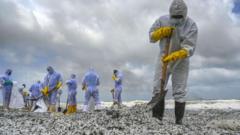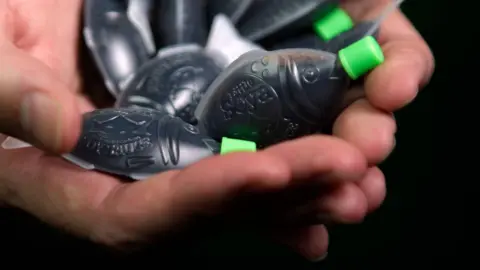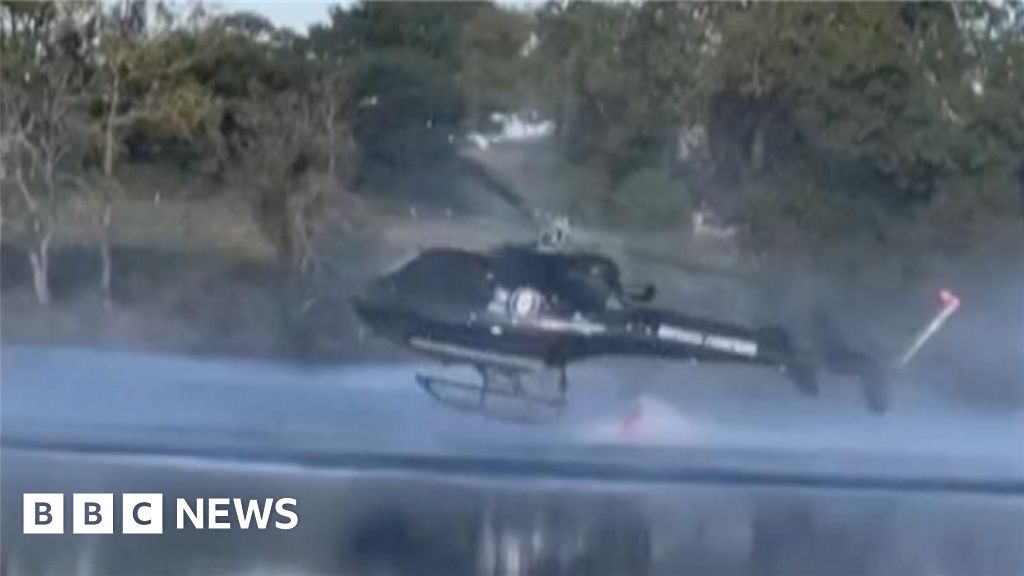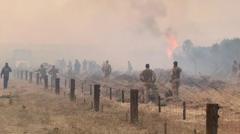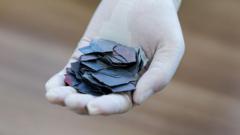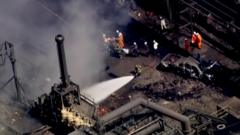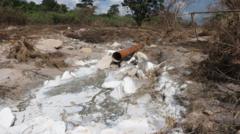Four years after the X-Press Pearl cargo ship disaster, Sri Lanka's coastlines are still grappling with the aftermath of the largest plastic spill recorded, with devoted volunteers painstakingly sifting through kilograms of toxic plastic pellets from the sands. The incident, which occurred in May 2021, led to billions of plastic nurdles washing ashore, alongside harmful cargo including engine fuel, acids, and heavy metals detrimental to marine ecosystems.
The immediate visual havoc was apparent as the white nurdles inundated the beaches, and numerous marine animals—turtles, dolphins, and various fish—were discovered dead with alarming symptoms. While initial clean-up efforts cleared considerable amounts of nurdles, scientists now warn the remaining microplastic debris is sinking deeper into the sand and growing more toxic.
David Megson, of Manchester Metropolitan University, revealed that these persistent particles are acting like "chemical sponges," absorbing further pollutants from the ocean and potentially posing significant risks to marine life. Research indicates that these pellets could leach toxic metals like arsenic and cadmium when ingested by aquatic organisms, placing both wildlife and humans who consume contaminated fish at risk.
Local fishermen, like Jude Sulanta, have connected the decline in fish populations to the disaster, expressing deep concern over their changing livelihoods. They maintain that since the incident, fish stocks have not rebounded, leading some to abandon fishing altogether in search of new opportunities abroad.
Although X-Press Feeders Ltd, the shipping company responsible for the wreck, has incurred substantial costs for clean-up efforts—over $130 million for debris removal and another $20 million toward compensatory measures—Sri Lankan authorities demand a further $1 billion as an initial payment for ongoing environmental and economic damages. Debate continues regarding the financial implications, as the local government seeks greater compensation to cover extensive long-term repercussions.
Prof. Prashanthi Guneeardena, an environmental economist, places the total cost from the disaster as close to $6 billion, factoring in wildlife losses as well as declines in tourism and fishing. As local communities feel the strain of pollution and diminished resources, sentiments abound that justice remains elusive, with many fishermen contemplating their future in a fragmented industry.
The X-Press Pearl disaster is a stark reminder of the hazards associated with maritime transport and its prolonged, damaging impact on environment and communities—a narrative that continues to unfold along Sri Lanka's picturesque but now vulnerable coastlines.

